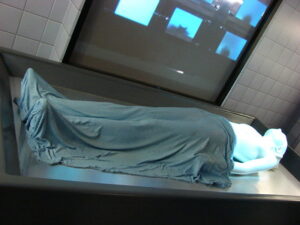About one-third of California community colleges will borrow money from private investors to pay their operating expenses this fiscal year. The institutions will issue Tax and Revenue Anticipation Notes (TRAN) to borrow against $1.5B in budget payments the state currently does not have.
Earlier this year, the State announced that it would “defer” previously approved budget payments to community colleges from February to June of this year. The deferral strategy also reduced California’s K-12 school budget by $11B.
The deferral left community colleges short on cash with limited options to make up the loss of funds. Some community colleges will make up the deferrals using their own reserves. At the State’s suggestion, K-12 school districts and some community colleges will issue short-term debt to cover the state funding. They will guarantee the debt through the State’s promise to pay the deferred funding in July. In theory, the summer infusion of cash from the State will allow the borrowers to repay the debts. Unfortunately, the schools will be stuck with the interest payments on whatever amount they borrow.
Recently, I wrote about a school district in Nebraska that borrowed (heavily) against future revenues. Due to a series of missteps (and some bad luck), the district found itself mired hopelessly in debt. It will seek a bond issue from voters to cover the millions of dollars the district currently owes.
The strategy of borrowing future revenues to cover today’s debts also comes with the high potential to destabilize future operations. The TRAN strategy is little more than a large-scale payday loan. It works well in theory, but less so in practice. You can either be short of cash now or short of cash later.
Community colleges need more responsible leadership
I’m not accusing California’s community colleges of being fiscally irresponsible. I am, however, pointing out the dangers of relying on the certainty of future revenues to pay off debts. This is essentially what WCC has done by using its operating funds as collateral for the Health and Fitness Center debt. In the next seven years, the HFC bond issue will require WCC to divert millions of dollars earmarked for operations to cover debt.
What makes this so unfortunate is that the debt was totally unnecessary. The Health and Fitness Center was never meant for student use. The College began recruiting student members only after it became apparent that non-student subscribers were not numerous enough to pay the building’s debt and maintenance costs.
Worse, the bond debt on this dog grows every year, which means that the College will need to find more subscribers every year to stay ahead of the bills. In a perfect world, it might be possible to oversubscribe the building enough to make the financial model work. But we live in a COVID-19 world, where health clubs are only half-operational. And the financial outlook for health clubs isn’t healthy.
Financially responsible individuals borrow only when necessary. The Health and Fitness Center wasn’t needed, and now it is a drag on WCC’s General Fund. The bond debt on the building will grow every year, but the number of subscribers won’t. In fact, the subscriber levels may never recover.
The WCC Trustees don’t seem to take their financial responsibilities to the community very seriously. They’ve saddled the College with an enormous debt for nothing. I’ll agree that the pandemic is a “black swan” event. But black swans are precisely why it’s a bad idea to gamble with money the taxpayers approved for College operations on anything else.
Photo Credit: Noel Reynolds , via Flickr























